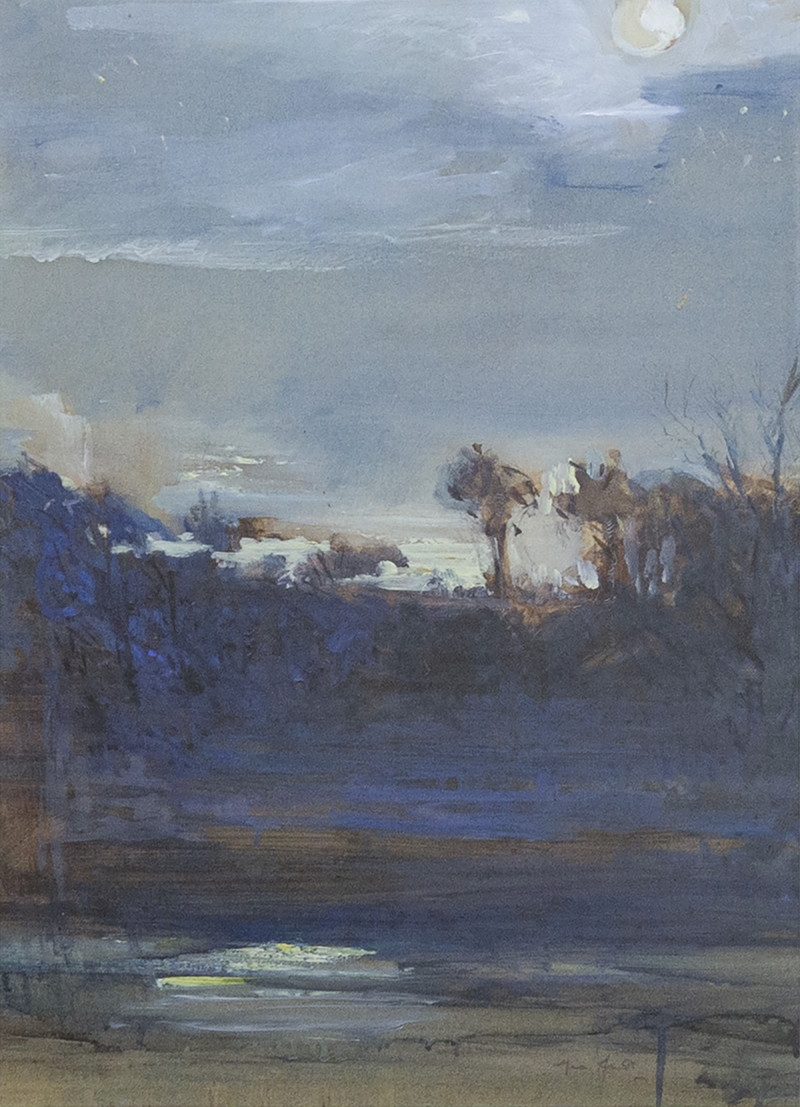Hermina Arndt was born to Jewish parents at her family’s property, Thurlby Domain, near Arrowtown. Her father died three weeks before she was born, so her Polish mother moved to Ōtepoti with her four children. In the early 1900s, they shifted again, to Te Whanganui-a-Tara, where Arndt attended art classes at Wellington Technical College from 1905 to 1906 and exhibited with the New Zealand Academy of Fine Arts. In 1907, she left for London with her mother and two sisters. There, she attended an art school where her teachers included the Welsh painter Frank Brangwyn. Her descendants believe that she studied at the Slade School of Art.
Also in London, Arndt met a German printmaker, Hermann Struck, who accepted her as one of his pupils in Berlin. This was unusual at the time; most artists almost automatically headed for Paris. However, Arndt spoke fluent German and had family contacts in Berlin. In 1907, she joined Stanhope Forbes’s school of art in Newlyn, Cornwall, where she met the painters Harold and Laura Knight. Together with another New Zealand artist, Whanganui-born Edith Collier, she shared the school’s interest in painting Cornish peasants.
By 1911, Arndt had returned to Berlin. She studied with Lovis Corinth, whose loose, post-impressionist style, with broad brushwork, is a clear influence on Moonlit Night. In early 1913, she was back in Cornwall. She exhibited at the Salon of La Société des Artistes Français, Paris, and also sent work back to Aotearoa, where it was well received. Returning to Germany in mid-1914, she and her sister were briefly interned, then released as part of an exchange of prisoners.
After returning to New Zealand in 1914, Arndt lived in Te Whanganui-a-Tara, where she rented a studio and exhibited a large number of her European works. Her predominantly dark colours upset critics enthusiastic about high-keyed impressionist painting. Few understood the innovations of her paint application and colour exploration. On 14 February 1917, she married Lionel Manoy, a Wellington widower, in a Jewish ceremony. They moved to Motueka, outside Whakatū Nelson, where they lived with his daughter from his previous marriage. In 1920, they had a son of their own.
At Motueka, Manoy saw to it that Arndt was provided with a studio and home help. With this encouragement, she was able to run a summer art school and to paint. She continued to exhibit at the New Zealand Academy of Fine Arts, but her work still challenged the conservative arbiters of taste; the gallery’s committee consistently hung her work above the normal sightline. Although provincial Wellington failed to appreciate her, she was again selected to exhibit at the Paris Salon in 1926.
Mina Arndt died aged 41. She was largely ignored until as late as 1960, when her son and stepdaughter initiated a retrospective at the Suter Art Gallery in Whakatū. In 1961, the New Zealand Academy of Fine Arts held its own belated retrospective in Te Whanganui-a-Tara. Today, paintings by Arndt, although rarely found, are highly regarded.




